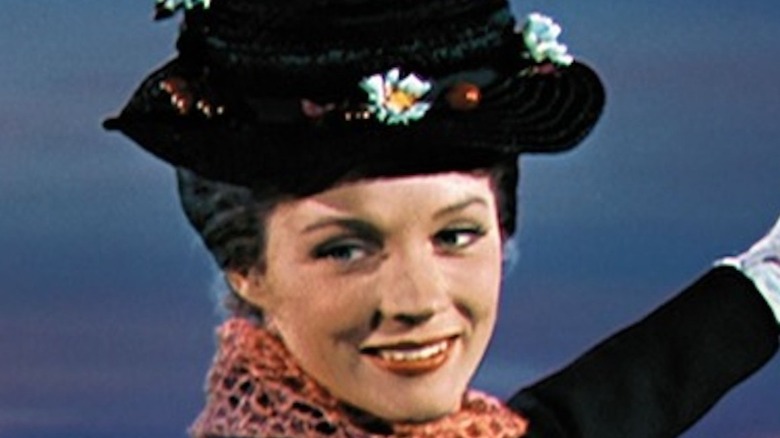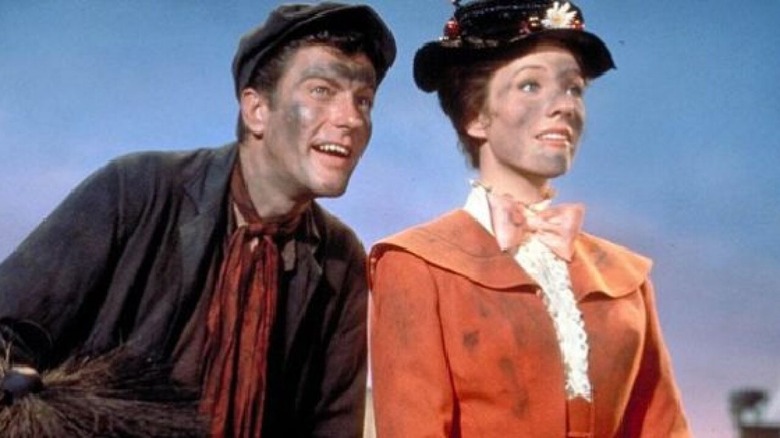The Mary Poppins Controversy Disney Probably Doesn't Want You To Remember
"Mary Poppins," which was released in 1964, has arguably endured as one of Disney's most popular films in a stable of already memorable movies. Based on the books by P. L. Travers, "Mary Poppins" tells the story of the whimsical and magical eponymous character played by Julie Andrews as she becomes the new nanny for Michael (Matthew Garber) and Jane Banks (Karen Dotrice). Not only has the film remained a pop culture fixture, but it spawned a sequel, "Mary Poppins Returns," in 2018 as well as a biographical film about its production, "Saving Mr. Banks," in 2013.
Still, like many Disney films that haven't exactly aged well, "Mary Poppins" is very much a product of its time, and it doesn't always stand up to modern sensibilities. In fact, there's one particular controversy related to the film that Disney would probably be all too happy for viewers to completely forget about altogether.
Mary Poppins has been accused of engaging in blackface
In a 2019 opinion piece by The New York Times, writer Daniel Pollack-Pelzner accused "Mary Poppins" of engaging in the harmful practice of blackface, which sees a non-Black actor wear make-up in order to create a caricature of a Black person. "Mary Poppins" seemingly tries to sidestep this practice by having the title character and Bert (Dick Van Dyke) be covered in soot during a chimney sweeper-centered musical number scene. While one could try and make the argument that this scene isn't engaging in the same stereotypes as traditional blackface sequences, Pollack-Pelzner argues that the movie can't escape its book source material, which often did use chimney sweeps for racist jokes.
Of course, some people on social media weren't exactly pleased with this take at the time. @coldxman on Twitter believes that people were in search of racism as if it were like oil to be struck and @jencon1978 believed that the context of the scene involving soot did not constitute the practice of blackface. Regardless of where one stands on this particular issue, clearly Pollack-Pelzner believed it was worth having a discussion about, and given how often people look at older films through a modern lens, it's likely not a conversation that's going away anytime soon.

